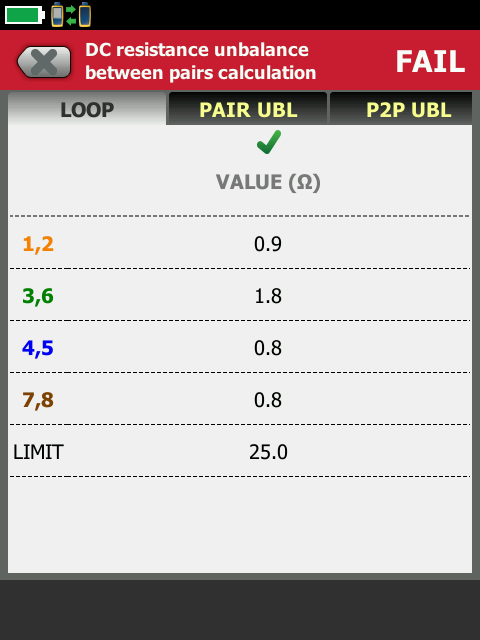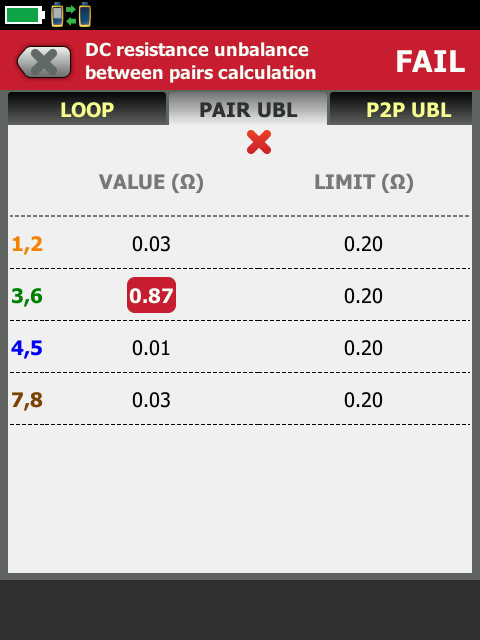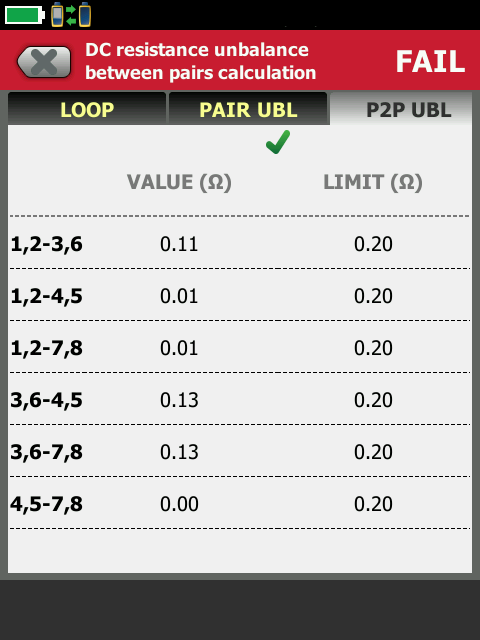DC Resistance Unbalance between pairs - DSX CableAnalyzer
This test is displayed automatically if the test limit selected contains (+All) in the limit name. It will also be displayed for all IEEE 802.3bt limits.
In the DSX CableAnalyzer, this is displayed as P2P UBL, an abbreviation of Pair to Pair Unbalance. It's a new requirement in the coming ANSI/TIA-568-C.2-1. It is needed to fully support IEEE 802.3bt, also known as PoE++. In order to deliver 60 watts, the DC parallel resistance between pairs must not exceed the greater of 7% or 50 mΩ. For the purposes of field testing, calculations that provide values less than 200 mΩ revert to a 200 mΩ limit.
In order to calculate the DC resistance unbalance between pairs, the DSX CableAnalyzer measures the individual resistances of each wire of the pair. This technique is also used to derive the DC Resistance Unbalance within a pair. Whilst DC resistance unbalance between pairs can be approximated from just the DC loop resistance, it assumes the DC resistance unbalance within a pair is negligible. That is not always the case. Failing to take into account the DC resistance unbalance within a pair can result in a different number/outcome which is demonstrated in this example from the field.



In this example, the DC resistance unbalance between pairs 1,2-3,6 was reported as 0.11 Ω. How did the DSX CableAnalyzer come up with 0.11 Ω?
First step is to calculate the parallel resistance of pair 1,2. The formula is R1 * R2 / R1+R2 where R1 is the resistance of conductor 1 and R2 is the resistance of conductor 2 of the same pair.

From this, we can calculate the DC resistance unbalance between pairs 1,2-3,6 as |0.22 Ω - 0.33 Ω| = 0.11 Ω
If the DC resistance unbalance between pairs was approximated from just DC loop resistance, the result would be 0.23 Ω.





